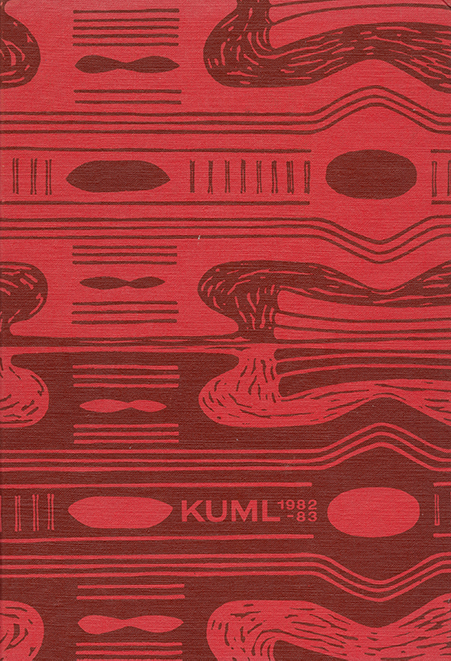Our old church porches and their former use
DOI:
https://doi.org/10.7146/kuml.v31i31.109148Keywords:
church porch, use, medieval ageAbstract
Our Old Church Porches and Their Former Use
From the Danish early Medieval Romanesque parish church to the fully developed late Medieval church, with its extensions, there is a long way. The most common addition is the porch. The origins of the porch -if there are any- may equally well be found in domestic as in ecclesiastical architecture, since many houses seem to have had porches, e.g. the houses of Fyrkat. But if the parish church is compared with the early Christian basilicas, our porches have most in common with the so-called "endo-narthex".
The early wooden churches seem not to have had porches and the Anglo-Saxon porches were more likely chapels, for burial use.
Porches were not planned parts of the Romanesque church, but this does not mean that there were no Romanesque porches. In Denmark 10-15 still remain and from the early Gothic period about the same number. But the largest number of porches, about a thousand, were built in the last years of the Medieval period. And to this number several must be added, because many Medieval porches have been demolished. Strangely enough it seems that none of these late Medieval porches are bonded to the nave, not even in the case of churches built contemporaneously with the porches, where these must have been planned from the start.
Though none remain in Denmark (but in Sweden), there must have been a number of Medieval timber porches, as well as of half-timbered.
While Medieval porches are common in Denmark, Southern Sweden and parts of Finland, they are more rare in Norway. On the Isle of Gotland, a wealthy community in the Medieval period, there are no porches.
Most porches are situated in front of the nave's southern entrance, but porches at the northern entrace are not unusual.
In Denmark a porch is called våbenhus ('weaponhouse'). This term is Medieval and it is believed that the churchgoers placed their weapons here, but the porches might also have served as a kind of armory. As a fortification the porch plays only a minor role -or none at all.
The porches could serve as store-rooms, but were not built specially for this purpose. In Denmark several twostoried Medieval porches are still found and it seems that the porches in general grew more lofty in the course of the Middle Ages. Two-storied porches are found all over Denmark, but are especially common in the eastern parts of Jutland. Even if it were necessary to explain this disparity, whatever the explanation might be, it cannot be doubted that the huge number of two-storied porches built in Eastern Jutland, was partly a matter of fashion. The second floor in the two-storied porches might have served as a dwelling for clergy; in some of them, as well as in the single-storied porches, a hearth can be found. Many churches did not have their own priest, but were regularly and continuously served by qualified clerks. It is known that the second floor at »Helligtrekongerskapellet« (Cathedra! of Roskilde) was used by a guild as an assembly hall, but apart from this, there is no evidence that porches have been used as such. The second storey in the two-storied porch might also have served as archive and library.
Fairs were held at cemeteries and it is easy to imagine the porch being included in the market area. Books were sold in porches of larger churches.
Some adjudication took place at churches, but to what extent it is hard to judge. Written sources seldom mention adjudication in porches, and mentioning it might indicate exceptions. The rise of the first porches in Denmark in the 13th century has been seen as a result of a spectacular increase in the strength of episcopal government, marked in ecclesiastical jurisdiction. But there is no evidence, and it is not likely that adjudication would have taken place in the cramped early Medieval porch.
Many churches, especially in Uppland, have porches with mural paintings. A main figure in these paintings is the Devil. This might indicate that exorcism took place in the porches. Other paintings indicate an earlier presence of an altar and in Denmark we have archaeological evidence for such porch altars. In Färentuna, Uppland and Frötuna, Uppland, altars are still present.
Våbenhus is not the only name for porch. Another is skrøvs, which means 'confession'. Several sources indicate that the Danish porches were used for confession and doing penance.
The Medieval church was the common area of the parishioners and the church door therefore served as a kind of notice board.
Actually we do not know why the porches were erected. Some possibilities have been mentioned. But it might well be that the reason is a simple one. Three main purposes of the porch will not be reflected in the written sources: the porch as a cloakroom or as an element of fashion -and, even if it has other functions, a porch always prevents draughts. And for a rheumatic people that in itself is a valid reason for building a porch!
Peter Pentz
Downloads
Published
How to Cite
Issue
Section
License
Fra og med årgang 2022 er artikler udgivet i Kuml med en licens fra Creative Commons (CC BY-NC-SA 4.0).
Alle tidligere årgange af tidsskriftet er ikke udgivet med en licens fra Creative Commons.


